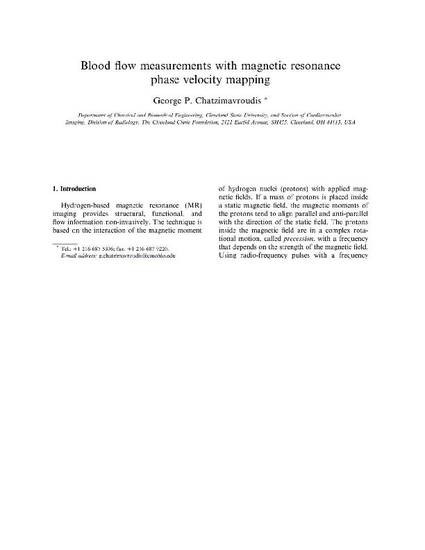
Magnetic resonance (MR) phase velocity mapping (PVM) is a non-invasive technique that can measure the flow velocity in any spatial direction in an imaging slice. This technique has wide application in the clinical field in quantifying blood flow, as well as in non-biomedical areas. This review describes the value and/or potential of MR PVM as a diagnostic/monitoring technique in heart valve regurgitation and in the total cavo-pulmonary connection. A single slice placed in the aortic root can accurately quantify the aortic regurgitant volume. A multi-slice control volume method has high potential for the quantification of the mitral regurgitant volume. In the total cavo-pulmonary connection, MR PVM with its unique clinical ability to measure all three directions of blood velocity provides the ability to visualize the two- or even three-directional blood flow patterns. It also promises a non-invasive quantification of the mechanical energy losses of blood as it flows through the connection. New rapid acquisition sequences show accuracy in quantifying flow and will greatly contribute to the increase of the number of applications of MR PVM.
